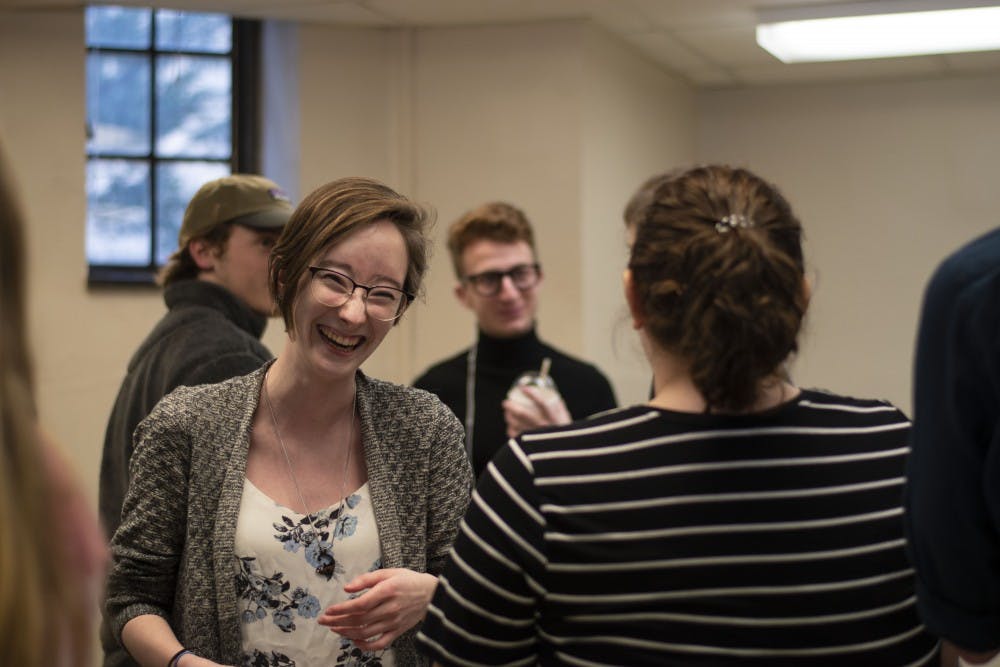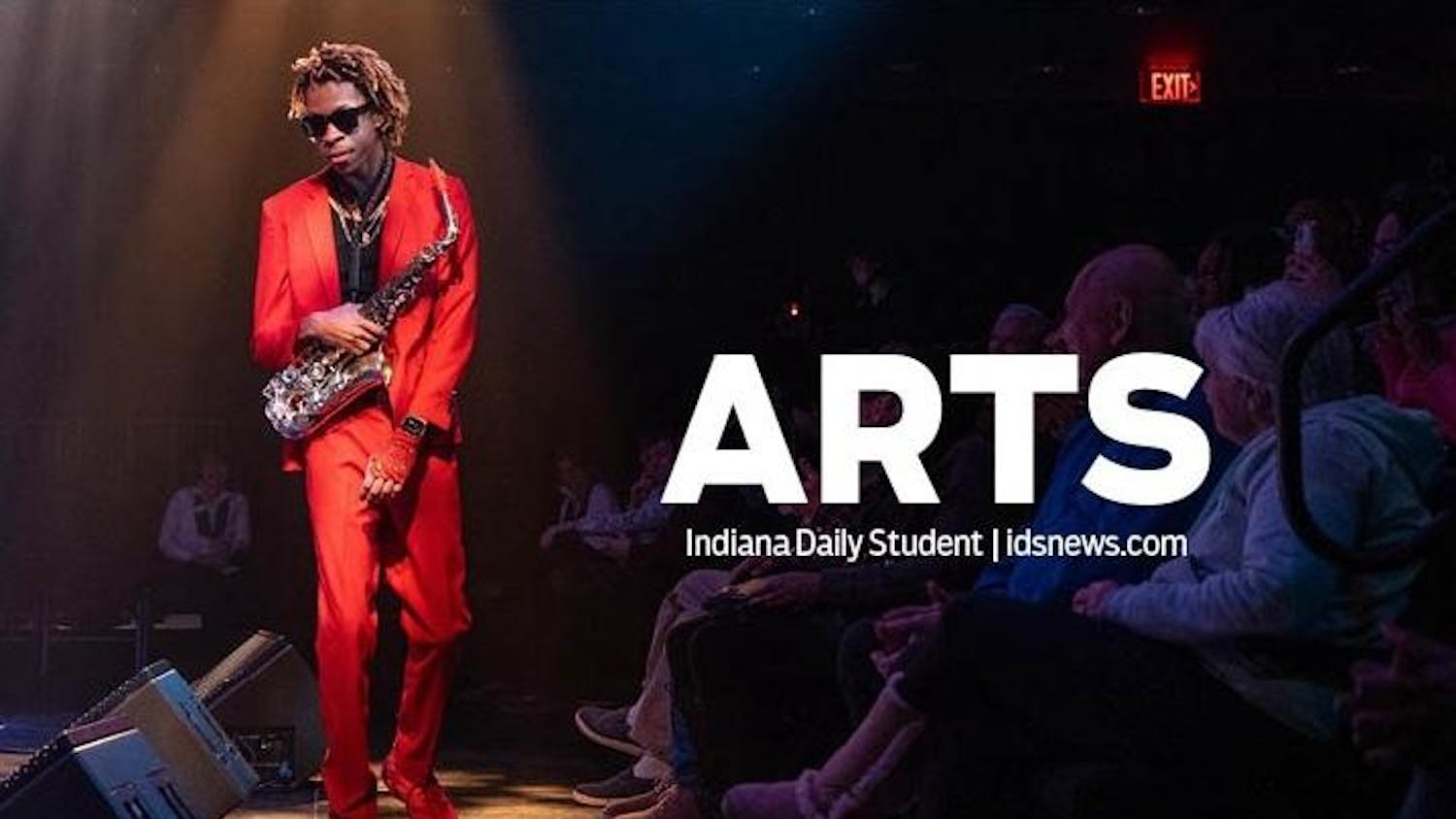Every day, senior D’Amani Hillman logs into Canvas and finds her class page for public oral communication. She begins to wade through a series of readings, mini lectures and quizzes.
Hillman then scrolls through lists of vocabulary words, memorizing rhetoric terms derived from Greek. She makes her way through the terms “polis,” “dissensus” and “sophistry” before calling it a day with the five canons of rhetoric — invention, arrangement, style, delivery and memory.
The process takes her two to three hours each day.
“It’s basically the worst part of my day,” Hillman, an environmental and sustainability major, said.
P155: Public Oral Communication has become a punching bag among College of Arts and Sciences students who see the required course as a waste of time and credit hours. But professors argue the course offers necessary job skills and promotes civic engagement.
Student frustrations with the course often boil down to one key point of contention — a difference in what professors and students see as the purpose of a public speaking course. While professors use vocabulary terms and readings to create a theory-based course, many students are looking for practical public speaking skills, wanting to focus on posture, stance and tone of voice.
“I want to learn a skill,” Hillman said. “Not memorize words.”
IU’s College of Arts and Sciences is not alone in having a public speaking requirement. By 2006, over half of U.S. universities already required a public speaking course, according to a study published by Rouledge. And the number has been climbing ever since, said John Arthos, an associate professor in English who teaches public oral communication.
Arthos said the course’s emphasis on civic engagement sets it apart from other universities that focus solely on delivery skills.
For Arthos, public speaking and theory go hand-in-hand. He said he sees his classroom not only as a place to learn the practical skill of public speaking but also a lab for democracy, where students learn to argue their political points, consider other perspectives and understand ethics.

While he recognizes students often complain the class spends too much time on theory, for Arthos, teaching students how to engage in political discussion in public spaces comes first.
“It’s not just the nuts and bolts of giving a speech,” Arthos said. “Speech delivery and civic engagement and ethics are cogs and wheels that depend on one another and should be taught together.”
Robert Terrill, director of writing and rhetoric studies, developed the first version of public oral communication in fall 2013. In a class of 200 students crowded into the lecture hall on the main floor of the Fine Arts building, Terrill began the course’s legacy with a similar emphasis on theory.
The decision to require a public speaking course was partially in response to state curricular changes emphasizing oral communication. But Terrill said the curriculum change just provided a window of opportunity for the college, which was already considering the new requirement to teach writing, research and speaking skills.
A team under Executive Dean Larry Singell presented the proposed requirement to college faculty members, who voted in its favor. ThenTerrill began his work, editing existing public speaking classes in the Department of Communication and Culture that were then only required for a select few majors.
But the decision wasn’t without pushback. Many professors were worried adding a new requirement would squeeze out other courses students would have taken otherwise.
Today, a red “We Made Communication Great Again” hat sits on Terrill’s desk, beside shelves stacked with books on rhetoric and its Greek roots. Terrill said the tradition of combining speech delivery skills with civic engagement and ethics dates back to ancient Athens.
Rhetoric began as a form of civic art among a group of philosophers called the Sophists in Ancient Greece circa 600 B.C. and was especially used in legal disputes. Teachers of the era developed the five canons of rhetoric — invention, arrangement, style, delivery and memory — which still appear on public oral communication vocabulary lists today.
Terrill said continuing that legacy requires balancing professional and civic goals.
“This is the most valuable way to learn both sides of that coin — the delivery and the theory,” Terrill said. “They belong together.”
Wanting to learn how to give a good presentation sophomore biochemistry major Piyush Sharma took C104: Business Presentations, the Kelley School of Business’s public speaking requirement. Sharma had already taken public oral communication his freshman year.
He said business presentations didn’t have the same emphasis on civic engagement goals Terrill derived from Greek tradition.
“It just helps tailor toward professionals,” he said.
But Hillman said she hasn’t learned anything about civic engagement in public oral communication.
Instead, Hillman said she’s saddled with busy work, including heavy note-taking, outlining, lessons on writing citations and quizzes twice a week. While the work isn’t difficult, Hillman said it eats up a lot of time.
“I haven’t really learned anything,” she said. “I feel like it’s a waste of time.”
Before Hillman switched to environmental and sustainability studies, she was in the School of Education. During her freshman year, she took G203: Communications for Youth Serving Professionals, the equivalent of public oral communication for School of Education students.
The course emphasized speaking in front of students and parents, requiring IU students to make and present lesson plans, perform mock parent-teacher conferences, give mini lecturesand lead mock classes.
In G203, Hillman said she learned more professional skills through the scenario and practice-based lessons.
“I did become a better public speaker because of my class freshman year,” she said. “But P155 did nothing.”
Sharma said, like communications for youth, business presentations emphasized practical skills over theory so students could apply what they learn in class to their work beyond the classroom.
“I feel like this class should be required for everyone,” he said. “No matter what you’re doing, being able to sell someone your idea is so important, and it shouldn’t just be for business students.”
Hillman said the College of Arts and Sciences should take a page from the business school or the School of Education’s books by creating different courses tailored to each major, rather than just one required for all majors.
She said doing so will help students learn practical public speaking skills directly related to their fields of study.
“A biologist won’t be giving the same kind of speeches as a political science major,” she said. “Each major requires some kind of communication, but putting them in the same category doesn’t do anything for anyone.”
But one common public speaking requirement for all majors serves a logistical purpose, said senior English lecturer Cindy Smith. Smith said having common requirements for basic skills such as public speaking makes it easier to transfer credits between universities.
Having one common public speaking course across majors in the college also helps students communicate information to people outside of their own fields.
“We didn’t want students to just learn how to communicate with fellow scientists, fellow doctors, fellow journalists,” Smith said. “Offering one course for everyone allows us to move beyond that bubble.”
More than tailoring courses to each major, Hillman said the best choice for public oral communication is to axe the requirement altogether.
“I think it should be an option,” Hillman said. “It’s a good class for some people but not everyone.”




